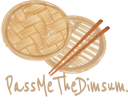I often get asked where one can find the best dim sum in Dubai (Royal China), or the best ramen in Dubai (A Story of Food), but where can one get the most ‘Japanese’ experience in Dubai? Kohantei.
Kohnatei is as Japanese as a meal can get in Dubai, not just because of the kimono-clad, soft-spoken staff that usher you to a low table set with semi-circular placemats, but because those placemats will be adorned with one carefully curated plate of premium ingredients after another. Now, fair warning: I haven’t yet tried Hoseki, and I’ll report back soon on how it compares, but for now, Kohantei remains a great and recommended option for a special occasion/romantic meal.
Because M and I can’t wait for special occasions, we just headed to Kohantei on a random Saturday afternoon last month, and were shown to one of the private dining rooms. There is also a common dining area, and with the wooden floors and paper thin walls, we instantly felt like we had time-travelled to Kyoto as soon as we stepped in through the doors. Yes, we had to take our shoes off, and no, for once I did not mind.
We chose the 7 course Omakase menu priced at AED 650 pp, not inclusive of drinks. Here’s what you can likely expect if you post for the same:
- Zensai (appetizer)
- Wanmono (soup)
- Tsukuri (Sashimi)
- Machizakana (A5 grade Japanese beef steak and 9+ Australian Wagyu beef steak)
- Shiizakana (Daily Special)
- Oshokuji (rice or noodles)
- Mizugashi (dessert)
I started off with a refreshing Yuzu Shiso Mojito, and M got a wasabi mojito (which was actually way more unique and memorable, because they used fresh frozen wasabi).
The Zensai was a trio of Wagyu Tataki in ponzu sauce, tender calamari with mirin, shoyu and dashi, and dark sesame paste tofu with a dollop of fresh frozen wasabi in dashi shoyu.
The Wanmono course was a chickpea and potato puree soup with Japanese meatball. Fun fact: miso soup should actually be had towards the end of a Japanese meal, and not in the beginning.
The Tsukuri course was a delectable plate of salmon, otoro, and suzuki (seabass) with fresh frozen wasabi, shoyu, horseradish and Japanese basil.
The piece de resistance was the Machizakana: an Australian Japanese breed called Kiwi with a marbling score of 9, and an A5 grade Hokkaido beef. These were like eating cubes of butter, and the pickled wasabi stems (called Kizami), charred shishito peppers, and grainy salt that came with it were all the seasoning and sides we needed.
The Shiizakana was Yukoae. It was thinly sliced raw beef marinated in ponzu.
For Oshokuji, we had sushi. We had Red Snapper (which is traditionally eaten during celebrations), Himachi, torched toro (semi-fat tuna), Kiwi, A5 Hokkaido beef. Because this was the end of the meal, it came with miso, pickled ginger, pickled wasabi stems and fresh wasabi.
The Mizugashi was Japanese Crown Melon and Hojicha.
Heartiest gratitude to Chef Hisao San for a thoughtfully prepared and elegant meal that I’d happily go back for the next time I’m missing Japan and want to feel proper.
















